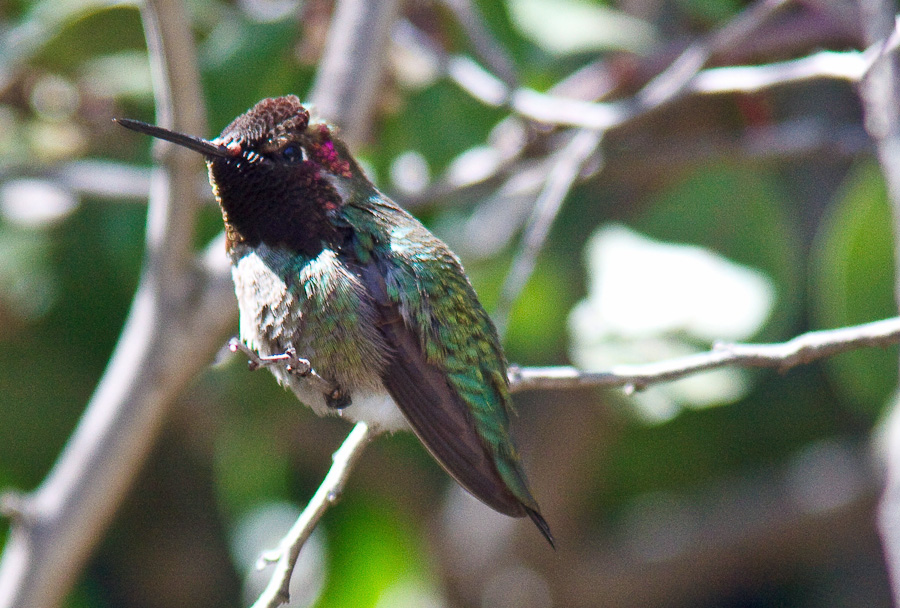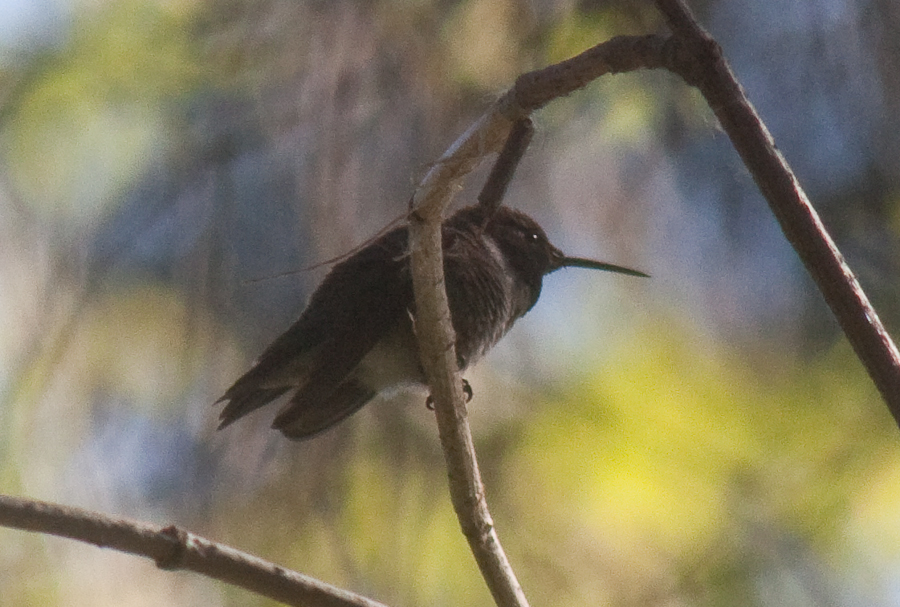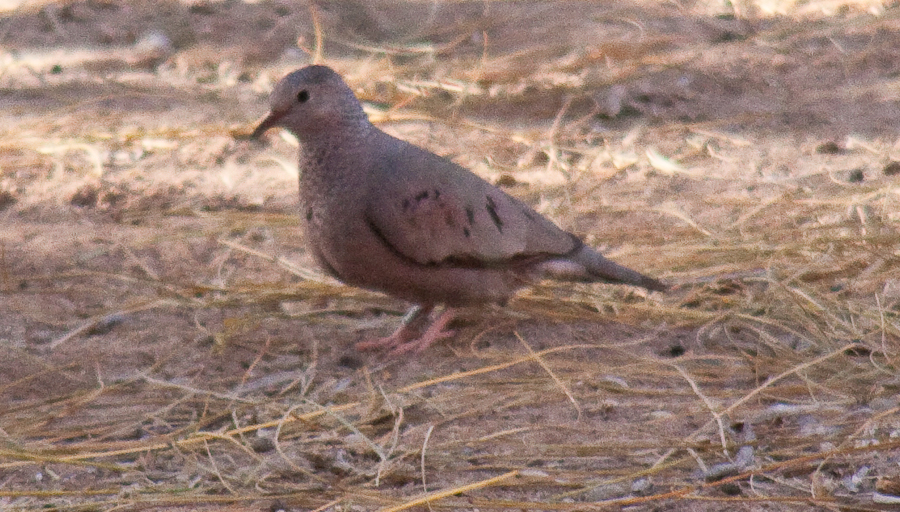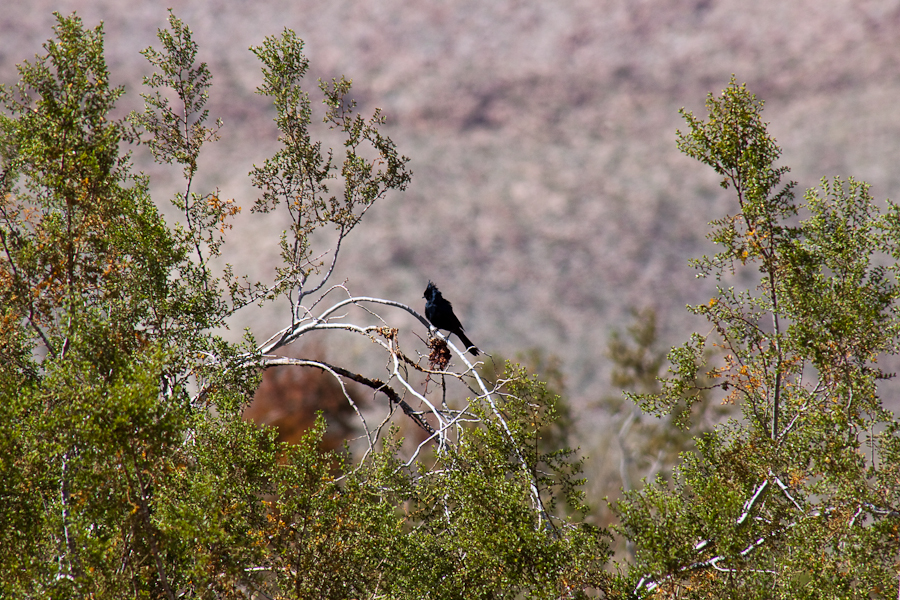Costa’s or Anna’s?
Monday, May 4th, 2009Yesterday at the Tucker Wildlife Sanctuary in Modjeska Canyon, I spent a lot of time looking at this hummingbird:

The classic distinction between a male Anna’s and a male Costa’s is that the Anna’s has a red gorget while the Costa’s has a purple gorget. The problem is that the much more common (around here at least) Anna’s male can also seem purple depending on angle and light. More than once I’ve sat and watched a hummingbird’s gorget switch from purple to red to purple to red to black to purple to red as it moved its head around. At this point I am extremely cautious about calling any Orange County hummingbird a Costa’s without an expert standing next to me to confirm the ID.
However this hummingbird shows purple in all my photographs and in the field. It never really looked red to me at all. Its gorget did, surprisingly, sometimes look copper, which is a color I’ve never seen on an Anna’s. I’m almost ready to stick my gorget out and call it a Costa’s except that according to Sibley, another distinguishing mark is that the wingtips of the Costa’s extend all the way to the tail tip, while on the Anna’s they’re a bit short. Damn. These wingtips clearly don’t extend all the way to the tail tip, though perhaps that’s a function of the angle or how the bird holds its wings at any given moment?
On the other hand, the more I look at this bird the more it looks violet and Costa’s like and the less Anna’s like it looks. I’m stumped. Anyone want to call this one?



